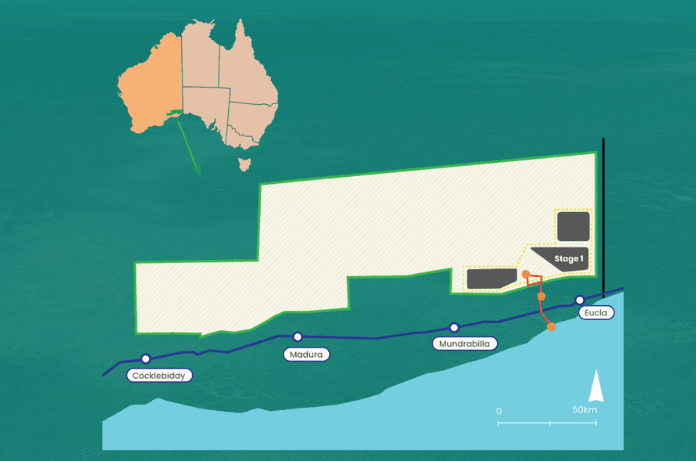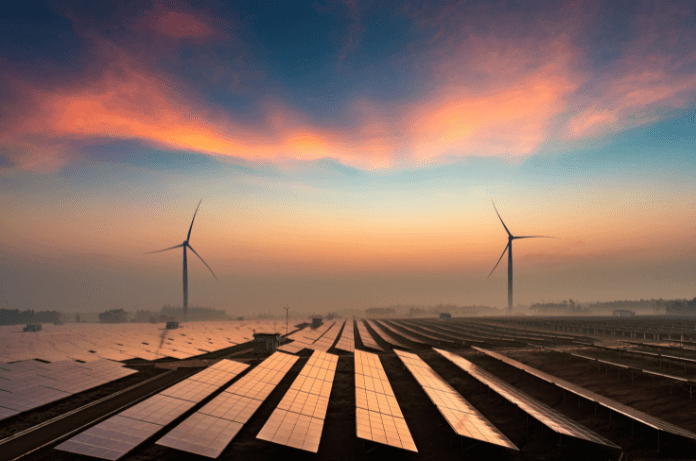The Western Green Energy Hub is set to be one of the most ambitious and planned renewable energy projects globally. It is located within the shires of Dundas and the city of Kalgoorlie-Boulder in south-east Western Australia.
Envisioned as a phased, large-scale hybrid wind and solar development, the hub is poised to transform the renewable energy landscape by addressing the growing demand for hydrogen, particularly for export markets. The first production from the project would be anticipated during the early 2030s and at full development, the cost of the project could be around AUD$100 billion.
This monumental project not only aims to harness the region’s abundant natural resources but also stands as a testament to the collaborative spirit and technological innovation driving the global shift toward clean energy solutions.
Key Proponents
- InterContinental Energy
- CWP Global
- Mirning Green Energy Limited (MGEL)
Primary End-Use Classification
- Export markets as the main focus
Production Capacity
- Full capacity: Up to 3.5 million tonnes of renewables-based hydrogen annually
- Stage 1: 0.33 million tonnes per annum of hydrogen production
Project Location
- South-East Western Australia

Project Description
The project encompasses a phased development of a large-scale wind and solar hybrid setup covering approximately 15,000 square kilometers. At full capacity, it could generate up to 50 gigawatts (GW) of renewable energy. The infrastructure development will be staged over 20 years, ultimately enabling the production of up to 3.5 million tonnes of renewables-based hydrogen production per year.
Collaboration with KEPC (Korea Electric Power Corporation)
In July 2023, it was announced that the Western Green Energy Hub (WGEH) and Korea Electric Power Corporation (KEPC) had signed a Memorandum of Understanding to move toward a Joint Development Agreement for the production of renewables-based hydrogen in Australia.
In December 2021, the Western Australian Government announced the project would receive Lead Agency Services from the Department of Jobs, Tourism, Science and Innovation. An application for Commonwealth Government Major Project Status is planned.
The Collaboration Agreement outlines a comprehensive strategy for executing a full feasibility study for Stage 1, which includes:
- Advancing project engineering and cost analysis
- Engaging with key Australian and Korean authorities and identifying project support sources
- Partnering with Australian and Korean firms for design, technology, construction, service provision, and potential offtake agreements
This feasibility study will inform further development for Stage 1, which aims to produce 6 GW of wind and solar power to generate up to 330,000 tonnes of hydrogen annually. The initial production phase is expected in the early 2030s, with full-scale operation potentially costing around AUD 100 billion.
The project will be situated on Unallocated Crown Land and pastoral leases. The onshore aspects will include an array of wind turbines and solar farms, centrally located hydrogen electrolyzers, data centers, and supporting electrical infrastructure, along with pumping and cooling systems. Additional features will involve a green ammonia (or another vector) production facility, workshops and fabrication units, worker accommodations, and an infrastructure corridor leading to the coast. The coastal and offshore elements will consist of a marine offloading facility, a desalination plant, a brine pipeline, and an export pipeline for ammonia (or other vectors), confined to State Waters.
Shaping the Future of Renewable Energy
The Western Green Energy Hub represents a transformative step towards meeting global hydrogen demands through sustainable, large-scale renewable energy solutions. As the project advances, it promises significant contributions to the clean energy sector, aligning with international climate goals and fostering collaboration across regions.

